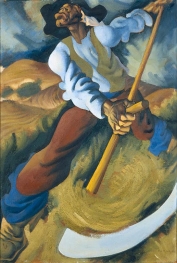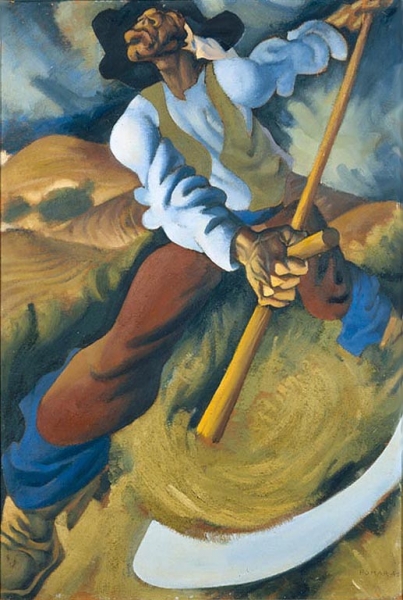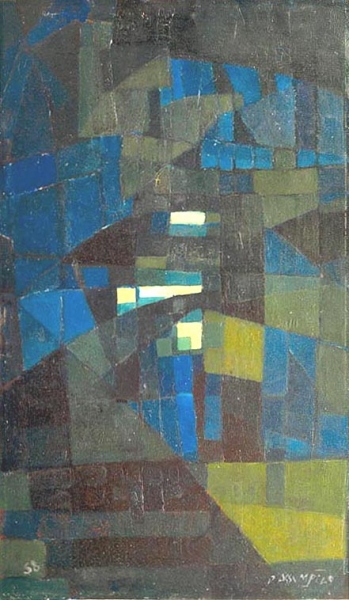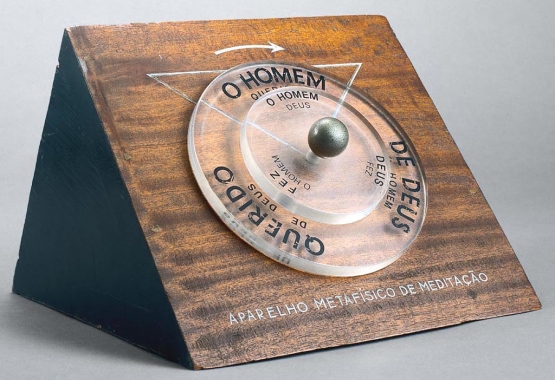With the generations of artists that appeared during these decades, the understanding and practices that claimed the radicalism promised in the early modernisms at the start of the 20th century and that then faded away in following decades became more complex. Only the work of Almada Negreiros, a product of the first avant-garde, represented a work of reflection and deepening of a synthesis of drawing, which in this period was subject to a re-formulation that radicalised many of the issues addressed by the early modernisms. Almada is thus a tutelary and referential figure within the historical avant-garde who remade himself in synchrony with later generations.
The 40s and 50s thus represent a more complex elaboration of the aspects which artistic practices were linked to: whether consideration of the specificity of the elements of the artwork (as with geometric abstractionism, pioneered in the work of Fernando Lanhas alongside that of Nadir Afonso and to which the work of Joaquim Rodrigo in the following decade gave new form); the provocation of distressing social realities that Portugal and the world experienced in the post-war period (alongside an understanding of the image produced by neo-realist cinema or by the paintings of the Mexican muralists which many painters, such as Manuel Filipe, Júlio Pomar, Júlio Resende, Querubim Lapa, among others, were influenced by); or even the influence of the subconscious on the production of forms (of which surrealism was an experimental model, initially addressed by António Pedro, later followed by António Dacosta, and which a younger generation, diversified by the practices of Marcelino Vespeira, Fernando Azevedo, Fernando Lemos, Alexandre O’Neill, Jorge Vieira, Mário Cesariny and others, then developed).
While these three movements punctuated the second half of the 1940s, and many of their aspects were developed in the following decade through the work of individual artists, a chasm opened up in the 1950s: the conflict between exponents of the figurative and the abstract (to which geometric abstract and non-figurative painters were added), which to an extent had engaged a very different Europe in the 1930s.
Painters who had come from surrealism, such as Vespeira, Azevedo and Calvet, experimented with the abstract alongside others – Manuel d’Assumpção, José Júlio – under the major influence of Maria Helena Vieira da Silva, developing chromatic and in certain cases gestural reverberations – like Jorge Oliveira – in an infinite construction of “ambiguous spaces”, as José Augusto França defined it.
Furthermore, the figurative painters from the Exposições Gerais de Artes Plásticas at the National Fine Arts Society, where neo-realism was the dominant language, one minute deepened its implications, as in the case of Júlio Pomar, and the next distanced themselves from Marxist ideas in search of a realism outside naturalist ideas that was simultaneously capable of restoring a melancholic pathos to daily life, as occurred with João Hogan, Sá Nogueira and Nikias Skapinakis, among others. At the beginning of the following decade, the latter two would develop, with important consequences, some of the issues raised in these years, in which the dictatorship cut off or strangled other possibilities after a fleeting post-war hope in a more open world.
Pedro Lapa
Director of the Museu do Chiado – Museu Nacional de Arte Contemporânea














